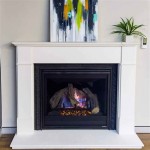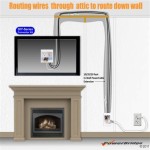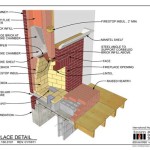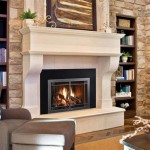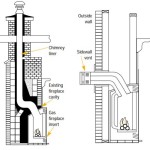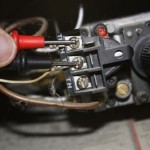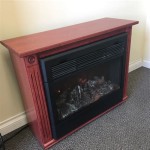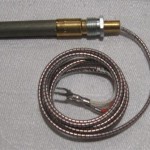How to Install a Fireplace Door
Installing a fireplace door is a project that can significantly enhance the aesthetic appeal and efficiency of a fireplace. A properly installed fireplace door reduces drafts, prevents sparks from escaping, and helps regulate the temperature within the room. While professional installation is always an option, many homeowners with basic DIY skills can successfully install a fireplace door themselves. This article provides a comprehensive guide to the installation process.
Before commencing the installation, it's crucial to gather all necessary tools and materials. This preparation stage ensures a smoother and more efficient workflow, minimizing potential delays and frustration during the installation process. Furthermore, accurate measurements are essential for selecting the correct fireplace door size. Taking the time to measure precisely will prevent the need for returns or modifications later on.
Key Point 1: Preparation and Measurement
The first step involves acquiring the right tools. Essential tools typically include: a tape measure, safety glasses, work gloves, a drill with various drill bits (including those designed for masonry), a level, a screwdriver (both flathead and Phillips head), a hammer, a chisel, and a caulking gun. A shop vacuum is also recommended for cleaning debris during and after the installation.
Having these tools readily available will streamline the installation process. Neglecting to gather all needed tools upfront is a common mistake that can lead to unnecessary interruptions and delays.
Next, accurate measurements of the fireplace opening are paramount. Measure the width and height of the firebox opening. It’s important to measure the opening at the front of the firebox, where the door frame will be installed. Take measurements at the top, middle, and bottom of the opening to account for any variations or irregularities in the firebox shape. Use the smallest measurements obtained for both width and height to ensure the door fits properly. Typically, fireplace door manufacturers provide detailed instructions on how to measure for their specific products; consult these instructions for precise guidance.
Once the measurements are taken, select a fireplace door that matches these dimensions. Consider the style and finish of the door to complement the existing décor of the room. Fireplace doors are available in a variety of materials, including steel, aluminum, and wrought iron, each offering different levels of durability and aesthetic appeal. Ensure the chosen door is compatible with the type of fireplace (e.g., masonry or prefabricated).
Finally, inspect the firebox opening for any loose bricks or mortar. Address any structural issues before proceeding with the door installation. Loose bricks or deteriorated mortar can compromise the stability of the door frame and potentially create safety hazards.
Key Point 2: Door Frame Installation
With the measurements taken and the appropriate fireplace door selected, the next phase involves the actual installation of the door frame. This process typically involves securing the frame to the firebox opening using various fastening methods, depending on the fireplace type and door design.
Before beginning the installation, carefully read and understand the manufacturer's instructions provided with the fireplace door. These instructions will outline the specific steps and recommendations for that particular model. Deviating from the manufacturer's instructions can lead to improper installation and potentially void the warranty.
Most fireplace doors are installed using one of two methods: inside fit or overlap fit. An inside fit means the door frame sits inside the firebox opening, flush with the surrounding brick or stone. An overlap fit means the door frame overlaps the firebox opening, covering a portion of the surrounding material.
For an inside fit, carefully position the door frame within the firebox opening. Use shims to ensure the frame is level and plumb. A level placed both horizontally and vertically on the frame will confirm proper alignment. Once the frame is properly positioned, use masonry screws or anchors to secure it to the firebox. Drill pilot holes through the frame and into the surrounding brick or stone before inserting the screws or anchors. The drill bit should be sized according to the manufacturer's specifications for the chosen fastener.
For an overlap fit, the process is similar, but the frame is positioned over the firebox opening. Again, use shims to ensure the frame is level and plumb. Secure the frame using masonry screws or anchors, drilling pilot holes as needed. In some cases, an overlap fit may require the use of construction adhesive in addition to screws or anchors to provide a more secure bond.
Caulking is an important step to seal any gaps between the door frame and the firebox opening. Use a high-temperature sealant specifically designed for fireplace applications. Apply the sealant evenly around the perimeter of the frame, creating a continuous and airtight seal. This prevents drafts and helps to improve the efficiency of the fireplace.
After caulking, allow the sealant to dry and cure completely according to the manufacturer's instructions before using the fireplace. This ensures that the seal is fully formed and capable of withstanding the heat generated by the fire.
Key Point 3: Door Attachment and Final Adjustments
Once the door frame is securely installed and the sealant has cured, the next step is to attach the actual door to the frame. This typically involves aligning the hinges on the door with the corresponding hinges on the frame and inserting hinge pins. The design of the hinges and attachment mechanism can vary depending on the specific fireplace door model.
Before attaching the door, inspect the hinges and ensure they are clean and free of any debris. Lubricate the hinges with a small amount of heat-resistant lubricant to ensure smooth operation. This will prevent squeaking and binding, and prolong the life of the hinges.
Carefully align the door with the frame, ensuring the hinges are properly seated. Insert the hinge pins, making sure they are securely locked in place. Some hinge pins may require a slight tap with a hammer to fully seat them. Be careful not to damage the pins or the hinges during this process.
After attaching the door, test its operation. Open and close the door several times, checking for any binding or misalignment. If the door does not open and close smoothly, adjust the hinges as needed. Some hinges may have adjustment screws that allow for fine-tuning of the door's alignment.
If the door has latches or other locking mechanisms, test these as well. Ensure the latches engage securely and hold the door closed tightly. Adjust the latches if necessary to achieve a proper fit.
Finally, clean the fireplace door and surrounding area. Remove any dust, debris, or fingerprints from the glass and frame. Use a glass cleaner specifically designed for fireplace doors to avoid damaging the glass. A clean fireplace door will provide a clear view of the fire and enhance the overall aesthetic appeal of the fireplace.
Following these steps will ensure the successful installation of a fireplace door. It is always recommended to consult a professional if there are any doubts or concerns about the installation process. A professional installer will have the experience and expertise to ensure the job is done correctly and safely.

How Do I Install A Fireplace Door On My Own

Pleasant Hearth Fireplace Doors Installation

How To Install Fireplace Doors Pleasant Hearth

How To Easily Install Fireplace Doors

How To Install Fireplace Doors Pleasant Hearth

How To Install Fireplace Doors Pleasant Hearth

Glass Fireplace Doors Pro Tips On How To Install Them

Pleasant Hearth Alpine Small Glass Fireplace Doors An 1010 The Home Depot

How To Install A Masonry Fireplace Door Diy

Pleasant Hearth Fireplace Doors Installation
Related Posts

